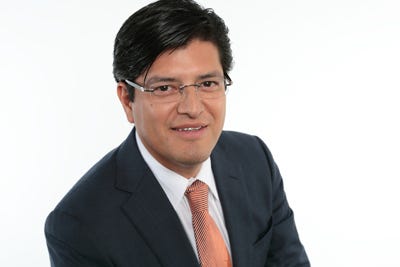That robot sitting next to a physician might be innovative and cutting edge. It might even be saving money. But does it understand what the physician's needs? In the ever-accelerating race to bring robotics and artificial intelligence into healthcare Miguel Canales, medical director and senior VP at Restoration Robotics, wants manufacturers to remember the human element and approach robotics from the physician's perspective.
May 7, 2013
That robot sitting next to a physician might be innovative and cutting edge. It might even be saving money. But does it understand what the physician's needs? In the ever-accelerating race to bring robotics and artificial intelligence into healthcare Miguel Canales, medical director and senior VP at Restoration Robotics, wants manufacturers to remember the human element and approach robotics from the physician's perspective. “Physicians are always seduced by high technology. The challenge for medical device makers, especially robotics companies, is to deliver value with their products,” Canales says.
Always try to identify a compelling need in the marketplace – a patient benefit, an enabling aspect, or a means of delivering a treatment that physicians otherwise cannot. It's about always looking for a way to make a product indispensable for a physician to use.
|
Canales |
This was the guiding philosophy by Restoration Robotics in creating the ARTAS Robotic System. The ARTAS is designed for hair transplantation, performing tasks physicians previous performed only manually, and is the the first robot to do so to receive FDA approval. Restoration Robotics views robots as interactive and working with humans rather than being independent automations. The challenge, Canales says, is “really identifying tasks and procedure portions where a robot can do something better than a human hand, but is interactive in a way that the robot still relies on clinician judgement and experience to make the right decisions.”
Any physician that does hair restoration can tell you it's not only lengthy procedure (treatments can take a full day) but also a very tedious one. Restoration Robotics studied every aspect of the hair replacement procedure through multiple physicians in order to identify problem areas. What they found was one step in particular where physicians were having trouble learning as well as performing well using manual instrumentation - follicular unit extraction (FUE), which uses a small thermal punch to dissect out hairs from the scalp that are then placed in the transplant area. Removing and implanting entire follicles allows hair to grow back permanently in a way that looks natural for the patient.
“We looked at the FUE procedure and it seems to be easy, but once you try it yourself you realize there's a very steep learning curve and its a very tedious process,” Canales says. “In order to really master it from a manual standpoint you have to spend years doing the technique.”
|
The ARTAS Robotic System’s precision robotics allow for the precise extraction of intact follicular units for transplantation. |
Developing the ARTAS involved navigating an ever-shifting line between conforming to clinician needs while also breaking new ground and finding new ways of performing the procedure. “The line keeps moving as our knowledge and confidence increases,” Canales says. “We had to study the ergonomics of the device, how different people - different sizes, and sexes – would use it. We kept breaking down the procedure to see where the human was going to interact and how do we go about standardizing that step so that it doesn't introduced variability down the line when the robot is used.”
In an early prototype of the ARTAS, for example, in order to harvest a follicle a physician needed to point-and-click on a monitor to select a hair to be extracted. The robot would do the work of extracting the hair, but the selection process was still very monotonous for the physician. In other versions a physician also had to manually adjust every depth of the needle used to dissect out the individual follicular units. In both cases, Canales says, Restoration Robotics asked itself, “Are we ready to automate this? Do we understand the variables needed and some of the human judgement that goes into selecting a hair that should be harvested in order to automate that process?
With consideration toward safety and efficacy, processes like these were automated using data and physician feedback and gradually sped up. “We broke the barrier between a human being selecting hairs to codifying that into the robot.” Canales says. “As our understanding of human factors increased, our confidence in being able to automate and have acceptable results also increased. Every step of the way was verified through data. That's how we ended up with a product that was highly automated but still relies on human judgement.”
Miguel Canales will be speaking at MD&M East on June 20, 2013 as part of a Medtech Innovate Seminar
-Chris Wiltz is the Associate Editor of MD+DI
http://www.canontradeshows.com/expo/east13/seminar-8-details.html?utm_source=mddionline&utm_medium=textlink&utm_campaign=chris
http://www.canontradeshows.com/expo/east13?utm_source=mddionline&utm_medium=textlink&utm_campaign=chris
Related Content
Meet Baxter, A Robot That Wants You to Rethink Manufacturing
In the Battle of Surgical Robot Makers, Intuitive Surgical Is Still Top Dog
GE to Create Robotic Hospital System to Assist with Sterilization
You May Also Like




